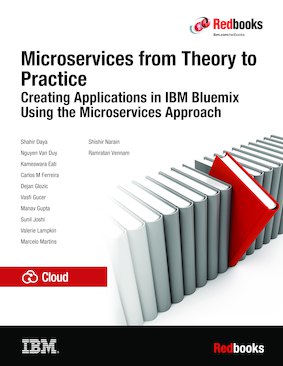
Published on 27 August 2015, updated 04 April 2016
Share this page:
ISBN-10: 0738440817
ISBN-13: 9780738440811
IBM Form #: SG24-8275-00
Authors: Shahir Daya, Nguyen Van Duy, Kameswara Eati, Carlos M Ferreira, Dejan Glozic, Vasfi Gucer, Manav Gupta, Sunil Joshi, Valerie Lampkin, Marcelo Martins, Shishir Narain and Ramratan Vennam
Abstract
Microservices is an architectural style in which large, complex software applications are composed of one or more smaller services. Each of these microservices focuses on completing one task that represents a small business capability. These microservices can be developed in any programming language. They communicate with each other using language-neutral protocols, such as Representational State Transfer (REST), or messaging applications, such as IBM® MQ Light.
This IBM Redbooks® publication gives a broad understanding of this increasingly popular architectural style, and provides some real-life examples of how you can develop applications using the microservices approach with IBM Bluemix™. The source code for all of these sample scenarios can be found on GitHub (https://github.com/).
The book also presents some case studies from IBM products. We explain the architectural decisions made, our experiences, and lessons learned when redesigning these products using the microservices approach.
Information technology (IT) professionals interested in learning about microservices and how to develop or redesign an application in Bluemix using microservices can benefit from this book.
Table of Contents
Part 1. Introducing the microservices architectural style
Chapter 1. Motivations for microservices
Chapter 2. Elements of a microservices architecture
Chapter 3. Microservices and DevOps
Chapter 4. Developing microservices in Bluemix
Chapter 5. Microservices case studies in IBM
Part 2. Example scenarios using the microservices approach
Chapter 6. Scenario 1: Transforming a monolithic application to use microservices (CloudTrader)
Chapter 7. Scenario 2: Microservices built on Bluemix
Chapter 8. Scenario 3: Modifying the Acme Air application and adding fault tolerance capabilities